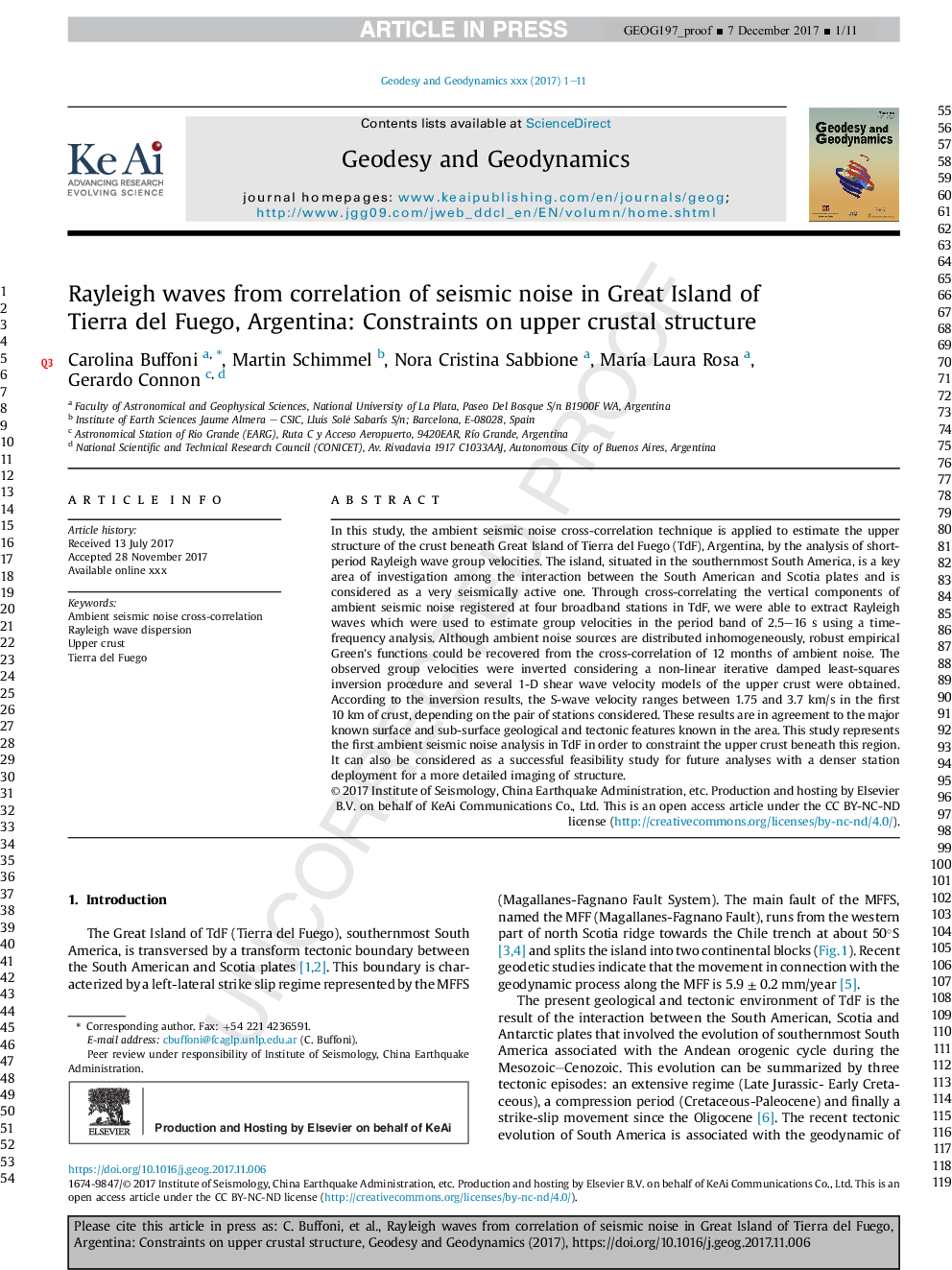| Article ID | Journal | Published Year | Pages | File Type |
|---|---|---|---|---|
| 8907871 | Geodesy and Geodynamics | 2018 | 11 Pages |
Abstract
In this study, the ambient seismic noise cross-correlation technique is applied to estimate the upper structure of the crust beneath Great Island of Tierra del Fuego (TdF), Argentina, by the analysis of short-period Rayleigh wave group velocities. The island, situated in the southernmost South America, is a key area of investigation among the interaction between the South American and Scotia plates and is considered as a very seismically active one. Through cross-correlating the vertical components of ambient seismic noise registered at four broadband stations in TdF, we were able to extract Rayleigh waves which were used to estimate group velocities in the period band of 2.5-16Â s using a time-frequency analysis. Although ambient noise sources are distributed inhomogeneously, robust empirical Green's functions could be recovered from the cross-correlation of 12 months of ambient noise. The observed group velocities were inverted considering a non-linear iterative damped least-squares inversion procedure and several 1-D shear wave velocity models of the upper crust were obtained. According to the inversion results, the S-wave velocity ranges between 1.75 and 3.7Â km/s in the first 10Â km of crust, depending on the pair of stations considered. These results are in agreement to the major known surface and sub-surface geological and tectonic features known in the area. This study represents the first ambient seismic noise analysis in TdF in order to constraint the upper crust beneath this region. It can also be considered as a successful feasibility study for future analyses with a denser station deployment for a more detailed imaging of structure.
Keywords
Related Topics
Physical Sciences and Engineering
Earth and Planetary Sciences
Earth-Surface Processes
Authors
Carolina Buffoni, Martin Schimmel, Nora Cristina Sabbione, MarÃa Laura Rosa, Gerardo Connon,
